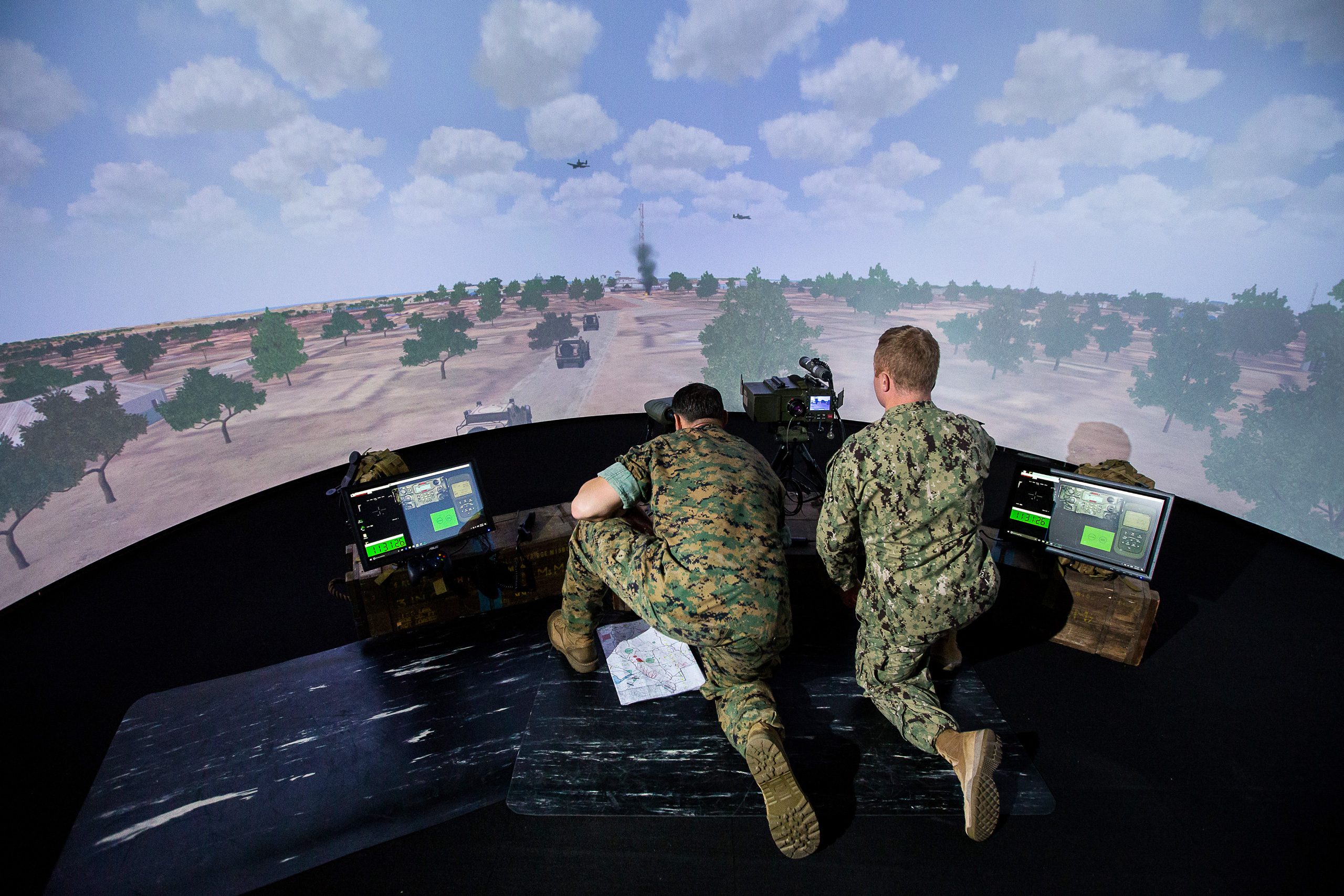Benefits of Simulated Training
By Major Andrew Lewis
Major Andrew Lewis spent 15 years on active duty as a Marine Corps Field Artillery Officer, serving in command billets at the team, platoon, and battery level. Additionally, he served on the staff of the Commanding General, Marine Air Ground Task Force Training Command and as the Director of Combat Skills Training School, First Marine Logistics Group, providing training for over 11,000 U.S. and allied military personnel preparing for deployments. He currently serves in the Marine Corps Reserves.
At the organizational level, corporations and uniformed military service shares parallel challenges. Annual individual and unit level training requirements are priorities, regardless as to the numerous issues pertaining to material readiness, available personnel, and budgetary constraints. In the face of these challenges, commanders at all echelons must think creatively and turn towards less conventional methods. This includes an increase in the use of training in the Live, Virtual, and Constructive (LVC) environment and computer-based simulations.
At face value, the concept of simulations for a military organization conjures neither practicality nor effectiveness. However, the methodology behind the practice is sound and rooted in basic premise- correctly executed repetitions, regardless of the medium yields higher levels of both competence and confidence. Simulated training is not a new concept. History shows simulations existed as far back as 500 BC with the ancient militaries of India preparing leaders for combat using rudimentary tabletop games similar to chess (Hill & Miller, 2019). Modern employment parallels the ancient premise; however, the technology has evolved with each generation. This technology is now employed worldwide at all levels of experience, from experienced aviators maintaining aircraft carrier landing currency to Marine recruits on Parris Island using marksmanship simulators to improve small arms competency during basic training.
As technology evolves, the idea remains the same- perfect practice makes perfect- from the smallest echelon of troops to joint force combatant commands. Joint Terminal Attack Controllers practice directing air to ground combat using simulators to overcome a shortage of available aircraft and weather related challenges. Infantry fire teams and squads conduct small unit tactics using Virtual Battlefield Simulator prior to Large Scale Exercises (LSE). Artillery battalions, presenting an inherent maintenance and logistical challenge, conduct full mission profile operations without ever traveling into the training area, allowing personnel to repair vehicles and cannons. The LVC environment allows a service-level training exercise across a large geographical area, requiring high-level coordination across Major Combatant Commands without large budgetary or personnel commitments. The introduction of virtual reality and augmented reality brings reality to the classroom environment, creating a well-prepared fighting organization while maintaining high levels of financial responsibility (USMC, 2021).
The portability of simulation-based training is a benefit. The Marine Corps’ Air Naval Gunfire Liaison Company (ANGLICO), a highly specialized fire support organization assigned to foreign allies, finds itself away from station tasked with both training and operational missions, providing a liaison and fire support capability to the Marine Expeditionary Force (MEF). The highly specialized nature of ANGLICO requires frequent and robust training with complex and costly currency requirements employing air, artillery, and naval surface fire support (NSFS). ANGLICO meets this requirement using the Deployable Virtual Training Environment (DVTE), a laptop driven simulator that yields a realistic training and evaluation tool in any environment. DVTE provides the means to ensure personnel assigned to even the most austere and remote location maintain the highest levels of currency training and critical skillset. For instructors assigned to Mobile Training Teams (MTT), DVTE is a low cost and effective asset that allows high quality instruction with minimal asset requirement.
Simulations provide instructional staff and leaders the luxury of “in stride debriefs” during training, a technique to correct technical, tactical, and safety related mistakes without exhausting finite resources. Through simulations, student and teacher discuss and remedy points of performance and gives students the chance to apply the lesson learned, ultimately yielding a higher level of competence, confidence, and a better result during live fire training. This training methodology ensures the students and warfighters are best prepared to execute at the highest levels during stressful training and, most importantly, actual contingency operations in the tactical environment.
The applicability and benefit of simulation-based training provides a unique opportunity for safety and training professionals in the corporate sector to provide employees high quality and effective training within even the most constrained budgets. Investing in such technology demonstrates a commitment to clients and employees in both safety and quality of work, forging stronger relationships internal and external to organizations. Whether the organization is seeking higher quality training, opportunities to increase return on investment or portable training options for remote locations, simulation based training is an option worth exploring.


References
Hill, R. R., & Miller, J. (2019). A History of United States Military Simulation. Retrieved from Informs-Sims: https://www.informs-sim.org/wsc17papers/includes/files/025.pdf
USMC. (2021). MAGTF Simulations. Retrieved from MAGTF Simulations: https://www.29palms.marines.mil/training/magtftcsims/